Results 6,951 to 6,960 of 12091
Thread: Anandtech News
-
05-11-17, 02:37 PM #6951
Anandtech: Cooler Master Debuts Affordable MasterBox Lite 5 Mid-Tower Case
With an eye towards expanding and refreshing their case lineup, Cooler Master has just announced the MasterBox Lite 5 mid-tower case. The Lite 5 is a new model, with a translucent front panel and customizable trim colors. Not to be confused with the MasterCase 5 that we reviewed back in 2015, the MasterBox 5 Lite is the latest variation in the MasterBox 5 series, which now consists of six different models.
The MasterBox Lite 5 is a 43-liter ATX mid-tower design, and This model supports Mini-ITX to ATX motherboards with a total of seven expansion slots. Due to its depth and wide open interior design, this case can handle expansion cards up to 400mm in length, which means that it can easily fit the longest consumer graphics cards on the market. For the CPU cooler, it is worth taking note that, it has a hard z-height limit up to 160mm tall for heatsinks. This doesn't mean much in the grand scheme of what's available for CPU cooling, but the tallest models like the Noctua NH-D15 will unfortunately not fit.
With dimensions of 200mm(W) x 468.8 mm(D) x 454.5 mm(H), the case is quite narrow, relatively deep, and a roughly average height. Surprisingly, for a case made with a combination of steel and plastic, it is reasonably lightweight at 5.07kg. While we are on the topic of dimensions, Cooler Master have included a generous 25mm to 35mm of cable routing room behind the motherboard tray.
Liquid cooling capabilities are aplenty, with support for one 120mm radiator at the back of the case and one 240-360mm radiator (up to 50mm thick without fan) on the front of the case. Speaking of fans, there is one 120mm fan pre-installed in the back of the case, and there is room for three 120mm or two 140mm fans on the front of the case. Dust filters are included on the front and bottom of the case (for the PSU fan). When it comes to connectivity, the front I/O panel has two USB 3.0 ports, as well as both audio in and audio out 3.5mm jacks.
As you can probably see, the interior of the case has been split into two chambers. The enclosed bottom chamber is where the power supply - which can be up to 180mm long - is installed. Although not explicitly mentioned in the available documentation, we strongly believe that the bottom chamber is also where you will find the single 2.5" SSD mount (either there or behind the MB tray) and two combo 2.5"/3.5" drive bays.
Clearly, one of the main marketing points of this model is aesthetics. The centerpiece is the angular front fascia, which Cooler Master calls their DarkMirror front panel. It is a tinted and highly glossy piece of translucent plastic - likely acrylic like the side panel - that is fully removable to help with the installation of any liquid cooling components. The edge-to-edge side panel window is tinted yet highly transparent, fully removable, and held in place with thumbscrews. As with other MasterCase designs, there are also some external customization possibilities thanks to the inclusion of three trim pieces of various colors - black, white, and red - for both the top and bottom part of the front fascia. And if that is not enough, Cooler Master have also made 3D printing schematics of the top and bottom trim available for download so that DIY community can customize this case.
The Cooler Master MasterBox 5 Lite is currently available for pre-order at Newegg.com for $50 USD with a stated release date of May 19th.
Gallery: MasterBox Lite 5





Related Reading
More...
-
05-12-17, 06:32 AM #6952
Anandtech: Huawei P10 and P10 Plus: Performance & Battery Life Report
Huawei is clearly focused on improving the performance of its flagship phones. The P9 and its Kirin 955 SoC performed well in our tests and was smooth and quick during everyday use. For the P10 and P10 Plus, Huawei tweaks the underlying hardware and software to make them perform even better for longer.
More...
-
05-12-17, 08:00 AM #6953
Anandtech: AT20 Giveaway Day 13: Seasonic PRIMEs You for PC Power Supplies
The end of the week is again upon us, so it’s time once more to close out the week with another giveaway as part of our 20 day giveaway celebration of AnandTech’s 20th anniversary.
Carrying us into the weekend this time is Seasonic. The specialty power supply maker is just that – a power supply maker – which gives them a unique identity in the PC PSU space, as they do just one thing, and they do that thing very well. So for today’s giveaway, we have 5 different power supplies from Seasonic to hand out, covering their PSU lineup from top to bottom. This includes the 850W and 650W PRIME Titanium PSUs, the 750W SnowSilent PSU, the X-650 650W PSU, and the S12II-520 520W PSU.
- Seasonic PRIME Titanium 850W PSU
- Seasonic PRIME Titanium 650W PSU
- Seasonic Snow Silent 750W PSU
- Seasonic X-650 650W PSU
- Seasonic S12II-520 520W PSU
The AnandTech 20th Anniversary Celebration – SeaSonic Giveaway
Seasonic S12II-520 520W PSU
Starting things off, we have the Seasonic S12II-520 PSU. This is a 520W 80Plus Bronze PSU that Seasonic fondly calls their “workhorse” PSU, bringing up the budget end of their range with a reasonable balance between quality and pricing. This fully wired PSU can deliver up to 480W on its two 12v rails and is cooled by a fluid dynamic bearing fan.
Seasonic X-650 650W PSU
Moving up the stack is one of Seasonic’s most popular PSUs over the years, the X-650. This 650W PSU is fully modular, offering a sizable selection of ports and cables to work with. From a power delivery standpoint is can deliver 648W over its sole 12v rail, reaching 80Plus Gold levels of efficiency. Finally, cooling is provided by a double ball bearing 120mm fan, which offers support for Seasonic’s “S3FC” technology for fanless operation when temperatures allow.
Seasonic Snow Silent 750W PSU
Third up is Seasonic’s Snow Silent 750 PSU. This is another fully modular PSU, contrasting black cables against the all white (snow) PSU. Total power delivery is 750W, with the 12v rail able to supply 744W, while power efficiency goes up another notch to 80Plus Platinum. Like the company’s other higher-end PSUs, this features a fanless operation mode for its included 120mm fan, which for the Snow Silent uses a fluid dynamic bearing setup.
Seasonic PRIME Titanium 650W and 850W
Last but certainly not least, we have two units from Seasonic’s flagship PRIME Titanium lineup of PSUs, the PRIME 850W and the PRIME 650W. The best of the best of Seasonic’s PSUs, the PRIME Titanium family are among the highest scoring PSUs we’ve ever reviewed at AnandTech. As our E. Fylladitakis noted in his review: “Seasonic made it easy for us to summarize the entirety of these units’ performance in just one word: mythical” thanks to the PSUs’ incredible power efficiency and voltage regulation.
Besides offering impeccable quality for power delivery, Seasonic rounds out the package with all of their bells and whistles. Including fully modular cabling and power efficiency exceeding 80Plus Titanium standards at all levels. Besides differing in total power output and the number of modular ports, the 850W and 650W units are virtually identical, with both sporting a black-and-titanium finish along with 135mm fluid dynamic bearing fans.
Finally, as with our other giveaways, this afternoon’s giveaway is only open for 48 hours, so be sure to enter soon. However please note that for legal reasons, we’re only able to open these giveaways to residents of the United States.
Good luck to everyone! And be sure to check in Monday for our next giveaway.
More...
-
05-12-17, 09:56 AM #6954
Anandtech: AOC Releases the I1659FWUX: a 15.6-inch 1080P Portable USB Monitor
AOC have just introduced a new high definition 15.6-inch portable USB monitor for those who need more screen real estate than their laptop can provide without worrying too much about having the right display connector. USB monitors are popular for users when giving presentations, or for multi-window work.
Labelled as the I1659FWUX, this 15.6-inch display has a resolution of 1920 x 1080 with a conventional refresh rate of 60Hz. It features an IPS panel with a matte anti-glare coating, a brightness of 220 cd/m2, a contrast ratio of 700:1, and a 25ms response time. The viewing angles are listed as 160° (CR>10) horizontal and 160° (CR>10) vertical. The "CR>10" part means that you can view 160° of the screen while retaining a contrast ratio of at least 10:1. Those viewing angles don't sound great for an IPS display, but given the specific metric that AOC is using it's hard to accurately judge it compared to other monitors.
The entire enclosure is made of a glossy piano black plastic (which may attract fingerprints), while the panel itself is framed by a half-inch bezel on all sides. Integrated into the enclosure is a foldable silver stand that can rotate the display into either portrait or landscape mode and there is an auto-rotation feature built-in. While the monitor portable in the literal sense, the I1659FWUX is 35.5mm (1.4-inch) thick and weighs 1.2 kg, so it is no compact featherweight product. Thankfully, a protective carrying case is included, so that will help when it to comes to travelling with the display. You're essentially carrying another laptop, in other words.
One of the key selling points of this monitor - portability aside - is that it receives both data and power via a single USB 3.0 cable, which means no additional bulky power adapter to carry. Power consumption is listed at 0.5W standby and 8W typical, so probably you won't be able to power it with just a single USB 3.0 port - most can't deliver more than 4.5W - but the included Y cable splits the load across two USB ports. Once the cable is plugged in, installation requires drivers and DisplayLink software that is compatible with both macOS and Windows.
It should be noted that while AOC already has a similar product with a very similar model name (E1659FWUX), that previous model features a TN panel which is brighter and has a lower response time, but worse contrast and viewing angles than this newer IPS version.AOC I1659FWUX Product Page Link Panel 15.6" IPS Native Resolution 1920 × 1080 (16:9) Maximum Refresh Rate 60 Hz Response Time 25 ms Brightness 220 cd/m² Contrast 700:1 Viewing Angles 160° (CR>10) / 160° (CR>10)
horizontal/verticalPixel Density 141 pixels per inch Display Colors 292K Stand Tilt (15° to 30°)
Auto PivotInputs 1 × USB 3.0 Audio None Dimensions 232.7mm x 371.9mm x 35.5mm (WxHxD) Weight 1.20 kg Price $149.90
The AOC I1659FWUX is available for pre-order on Amazon.com for $149.90 USD with a stated in-stock date of May 13th.
Gallery: I1659FWUX





Related Reading- AOC Expands AGON Family with Curved AG322QCX and AG272FCX 144 Hz Displays
- The AOC Q2781PS Announced: 'Frameless' Rose Gold 27" QHD with Swarovski Crystals
- AOC Announces the AGON AG352UCG 21:9 Curved Display: 35" 3440x1440, 100Hz with G-Sync
- Razer Reveals Their Triple Monitor Gaming Laptop Concept: Project Valerie
More...
-
05-12-17, 12:06 PM #6955
Anandtech: ASUS Announces ROG STRIX H270I & B250I Mini-ITX Motherboards
ASUS has just added to its Intel 200-series motherboard lineup with the announcement of two new mini-ITX motherboards. Dubbed the ROG Strix H270I Gaming and ROG Strix B250I Gaming, these two models differ when it comes to chipsets, but they are otherwise functionally identical in most respects.
Up until now, the ROG Strix Z270I was the only 'high-end' mini-ITX model in the ASUS LGA1151 product line, and given the absence of a Maximus IX Impact it has served as the spiritual successor to the Maximus VIII Impact that we reviewed back in December 2015. The lineage between the ROG Strix Z270I and these two latest models is much more obvious. Aside from one less MOSFET heatsink, the chipset, and some different VRM components, all three of these motherboards are all largely indistinguishable. Having said that, whereas the higher-end Z270-based model supports both CPU and memory overclocking, these two new more affordable models are aimed at those running stock-clocked CPUs. As such, they are also limited to memory speeds of DDR4-2400. While we are on the subject of memory, both motherboards clearly only have two memory slots and therefore system memory is limited to 32GB.
An interesting part of these mini-ITX models is that ASUS have managed to fit two M.2 connectors on a tiny PCB footprint. This is due to a double-decker heatsink design that allows an M.2 drive to be stacked on top of the PCH heatsink. This means that the M.2 drive is also cooled by the top cover of the heatsink. Both M.2 connectors can handle full-speed PCIe 3.0 x4 NVMe SSDs, as well as Intel Optane Memory, but only one of them supports SATA-based M.2 solid state drives.
Both motherboards have four SATA 6Gb/s ports and support Intel Rapid Storage Technology, although only the Strix H270I has RAID 0, 1, 5, 10 and Intel SRT capabilities. There is a small divergence when it comes to USB connectivity, with the H270I supporting eight USB 3.0 ports (six rear, one header) and the B250I supporting six USB 3.0 ports (four rear, one header) and two USB 2.0 ports (two rear).
The H270-based model also has two gigabit LAN ports (one powered by an Intel I219V and the other a Realtek RTL8111H) while the B250-based model only has a single gigabit LAN port courtesy of an Intel I219V controller. All of these LAN ports are protected by LANGuard surge protectors and can be managed using the ASUS GameFirst IV traffic management software. Both models also have onboard dual-band 802.11ac Wi-Fi with MU-MIMO, Bluetooth 4.1, and an included 2x2 external antenna. For those planning to use integrated graphics, both motherboards feature HDMI 1.4 and DisplayPort 1.2 video outputs.
Given the obvious size constraints, the Strix H270I and Strix B250I only have one PCIe 3.0 x16 slot, and it is SafeSlot metal-reinforced (additional PCIe rigidity for heavy GPUs). Onboard audio duties are handled by an ROG SupremeFX eight-channel HD audio solution, which is based on the Realtek ALC1220A codec. There are dual headphone amplifiers, which means additional power and impedance sensing for both the front and rear headphone outputs. This onboard audio implementation also benefits from the ASUS audio software suite that consists of Sonic Studio III and Sonic Radar III.
Since it is apparently the must-have feature of the second half of the decade, ASUS has added AURA RGB lighting to both of these models, in the form of a series of LEDs placed along the entire right side. There is also one RGB header that can power an LED light strip. Due to the Aura Sync feature, all of the lighting is controllable from within the AURA utility. While we are on the topic of cool features (Ed: Punny...), there are three total fan headers - one which can handle a water pump or high amperage fan - and all of which can be managed by the excellent Fan Xpert 4 UEFI and/or software fan controls.
There's no word on availability or pricing, other than the fact that we expect the Strix H270I will cost a little bit more than the Strix B250I.
Gallery: ROG Strix H270I




Gallery: ROG Strix B250I




Related Reading- ZOTAC Announces GeForce GTX 1080 for Mini-ITX PCs
- Lian Li PC-Q37 Announced: Two-Stage Mini-ITX Chassis with Tempered Glass
- The ASUS Maximus VIII Impact Z170 ROG Mini-ITX Motherboard Review
More...
-
05-12-17, 03:18 PM #6956
Anandtech: Fractal Design Launches New S24 and S36 Celsius AIO Liquid Coolers
Fractal Design has just unveiled a different take on a new line of all-in-one liquid coolers, called the Celsius series. Unlike conventional AIOs, these new models are not actually closed-loop: they have threaded fittings on the radiator side in order to allow for expansion possibilities with common DIY liquid cooling components.
The two units being launched are the Celsius S24 and Celsius S36, which feature 240mm and 360mm radiators respectively. The radiators feature aluminium housings and fins, and they are both around 30mm thick. As mentioned above, it is the fittings that are the really interesting part of this new product line. While the CPU block fittings are non-removable, the radiator fittings are knurled metal and feature a standard G 1/4" thread. Since the G 1/4" fitting is so common in the custom liquid cooling market, the expansion options are vast. As long as you add additional coolant, you could loop in a second waterblock, a second radiator, or even a reservoir. As a result, you cannot consider these Celsius models to be strictly closed-loop coolers (CLCs), but instead something of a new hybrid.
There is an integrated fan hub located between the radiator's inlet and output ports, with two free 4-pin fan headers on the S24 model and three unoccupied 4-pin fan headers on the S36 model. Surprisingly, these fan headers are actually attached to a hardware fan controller that is built into the CPU block. Fractal Design has been incredibly clever and slipped the cable in between the sleeving and the rubber tubing, and they have run it the entire 400m tubing length to the CPU block/pump/fan controller unit.
Gallery: Celsius S24





The fan controller has two user-selectable modes, either "auto" (which is based on the liquid temperature and handled by the cooler itself), or a "PWM" mode (which gives control to the motherboard and is based on the actual CPU temperature). In either mode, both the pump and the fan speeds will be increased/decreased since they are all PWM capable.
Speaking of fans, these Celsius coolers come with either two or three of the high-quality Dynamic X2 GP-12 PWM fans that Fractal Design launched last summer. They have rotational speeds of between 500-2000 RPM, and use "LLS" bearings, with a claimed 32.2 dB(A) full speed noise levels, a stated airflow of 87.6 CFM, 2.30mm H2O of static pressure, and they are rated for up to 100,000 hours of use.
The pump, which is built into the CPU block housing, has a rotational speed of between 1950-3150 RPM, and a full speed noise level of 20.0 dB(A). This gives it a 50,000 hour MTBF (or 5.7 years full use). Total power consumption for the Celsius S36 is listed at 9.0W, while the smaller S24 clocks in at 6.6W. All of this is powered from a single fan header on your motherboard, so a dedicated water pump header with high amperage capabilities is probably a good thing. The CPU block has a copper base and features sound-dampening materials in order to reduce operating noise output. High thermal conductivity thermal paste is pre-applied.
These liquid coolers support all modern CPU sockets, including the latest AMD AM4 platform. We have no word on availability, but the Fractal Design Celsius S24 will retail for $109 USD and the larger Fractal Design Celsius S36 for $119 USD. Both of these units are covered by a five-year warranty.
Gallery: Celsius S36





Related Reading- The Alphacool Eisbaer 240 CPU AIO Liquid Cooler Review
- The EKWB EK-XLC Predator 240 Liquid Cooler Review
- Closed Loop AIO Liquid Coolers: 14-way Mega Roundup Review
More...
-
05-13-17, 09:09 AM #6957
Anandtech: Lian Li Launches ASUS ROG-Inspired PC-O11WGX Case: Two Chambers, E-ATX, US
Lian Li has introduced its new chassis for advanced desktops, the PC-O11WGX. The company's latest case has two chambers for more efficient cooling, is compatible with motherboards in the E-ATX form-factor, can fit in nine storage devices in drive form-factor, three 360-mm radiators and has a USB 3.1 Type-C header on its front panel. Stylistically, the case comes with a front panel featuring ASUS ROG stylings, which means incorporating Mayan patterns. Being aimed at modders and overclockers, the Lian Li PC-O11WGX is everything but affordable.
The Lian Li PC-O11 WGX chassis follows the latest trends in PC building and is designed to be suitable for highly-modded systems while also being very efficient in terms of cooling and compatibility. On the outside, the case has two panels made of tempered glass, exposing the key components of the computer. Inside, like many other contemporary PC cases, the PC-O11WGX uses a two-chamber design: one of the compartments housing the motherboard, graphics card, memory, and cooling, another accommodating the power supply, cables, along with nine HDDs and/or SSDs.
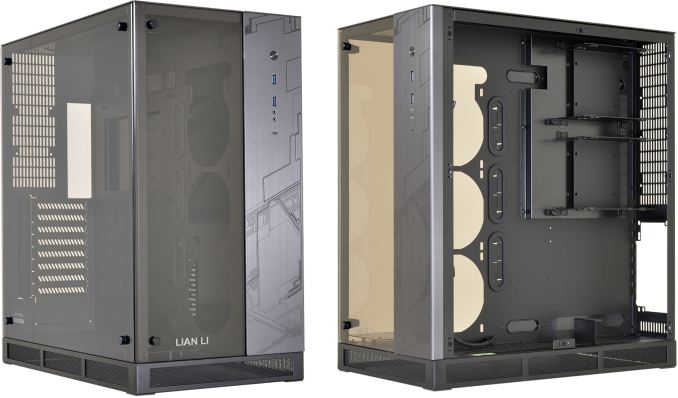
The new case from Lian Li can fit in a motherboard in ATX, E-ATX, Mini-ITX and Micro-ATX form-factors with up to eight add-in cards. Moreover, for those who like to see/expose their graphics cards, Lian Li supplies a special riser cable to install the graphics card vertically. The maximum length of the graphics card is 430 mm, so, not only single-GPU, but dual-GPU boards are supported with plenty of space left. Meanwhile, the maximum height of the CPU cooling system is 150 mm, so not all mega-coolers can fit in (e.g., Thermalright’s Archon IB-E X2 cannot).
Speaking of cooling, Lian Li built the PC-O11 WGX primarily with liquid cooling in mind: the chassis has space for three 360-mm radiators for closed-loop or custom liquid coolers, enabling its owner to build a gaming system with a HEDT CPU, a couple of graphics cards, and then cool each of those components using its own LCS (or build one LCS with three radiators if necessary). To provide enough power for everything, the case can accommodate a PSU that is up to 430 mm long.
Since we are talking about a high-end chassis, the PSU and HDD/SSD mounts are equipped with rubber vibration dampers, whereas the top and bottom panels are equipped with mesh dust filters (unclear whether they are removable though).
Lian Li says that ASUS has certified the case, guaranteeing that all the ROG-family components will fit in and will work flawlessly. This is not the first ROG-certified chassis from Lian Li - and arguably it's more of a co-branding exercise than any kind of stringent technical qualification - but the additional styling and verification from ASUS engineers never hurts.Lian Li PC-O11WGX Motherboard Size ATX, E-ATX, Micro-ATX, Mini-ITX Drive Bays External - Internal 4 × 3.5" and 4 × 2.5" Cooling Front 3 × 120 mm/1 × 360 mm Rear 2 × 80 mm Top 2 × 120 mm Middle - Bottom 3 × 120 mm Radiator Support Front - Rear - Top 1 × 360 mm Middle 2 × 360 mm Bottom - I/O Port 1 × USB-c 3.1, 2 × USB 3.0, 1 × Headphone, 1 × Mic Power Supply Size Up to 430 mm Dimensions W: 277 mm × H: 506 mm × D: 457 mm Colors Grey Features Glass front and side panels Price $319
The Lian Li PC-O11WGX computer chassis will be available in North America in mid-May for $319. The price of the case is rather high, but since we are dealing with a top-of-the-range product aimed at modders and performance enthusiasts, it is not surprising.
Gallery: Lian Li PC-O11WGX





Related Reading:
- Lian Li PC-Q37 Announced: Two-Stage Mini-ITX Chassis with Tempered Glass
- Gigabyte Expands Xtreme Gaming Lineup with XC700W and XC300W Chassis
- The Corsair Carbide 600Q Case Review: Upside Down But Right On
- The BitFenix Pandora ATX Case Review
- ASUS at Computex 2016: The 10 Years of the Republic Of Gamers (ROG) Booth Tour
More...
-
05-13-17, 03:22 PM #6958
Anandtech: Western Digital: Sales of Helium-Filled HDDs Accelerating, 15M Sold So Far
Western Digital recently announced that it had sold 15 million helium-filled hard drives, indicating that sales of such HDDs are accelerating. Since the launch of the HGST HelioSeal platform about 3.5 years ago, it has enabled HGST to make a number of technological improvements to its hard drives in terms of their capacities. It is noteworthy that while Western Digital is expanding usage of helium, it has not announced plans to expand usage of shingled-magnetic recording (SMR).
HGST, a subsidiary of Western Digital, started volume shipments of its first-generation helium-filled Ultrastar He-series hard drives in November 2013. HGST sold about a million HelioSeal HDDs in the first 1.5 years on the market, but once numerous operators of large cloud datacenters qualified such drives, their sales started to accelerate. For example, HGST supplied 1.1 million of helium-filled HDDs in Q3 2015 — more than in their first six quarters on the market. Meanwhile back in October of last year, Western Digital said it had sold 10 million HelioSeal hard drives. As it appears from the recent comments made by the company, in just a couple of quarters it has managed to sell another five million helium HDDs with cumulative shipments of such drives topping 15 million units since late 2013.
“I am pleased to note that we have now shipped approximately 15 million helium hard drives cumulatively since the platform's launch four years ago,” said Michael D. Cordano, president of Western Digital, during a conference call with investors and analysts.
There are multiple reasons why sales of HelioSeal-based HDDs are accelerating. First, the demand for datacenter hard drives is growing, and operators have finally qualified helium-filled HDDs for new deployments. Second, with the systematic increase of drive capacities (a new capacity point is launched every 12 – 18 months), Western Digital can gradually increase shipments of helium-filled drives to existing and new deployments. Third, Western Digital is expanding usage of helium beyond datacenter-class drives to NAS and even consumer HDDs.
From technology standpoint, HelioSeal has made quite a bit of progress in the recent 3.5 years. Initially, it enabled HGST to place seven platters into a single 3.5” HDD and offer a 6 TB drive, which in turn had lower power consumption and higher performance than various competitors. Installation of seven platters into one drive required HGST to redesign some of the internal HDD components, and this is always a challenge. Moreover, late last year HGST introduced an even denser hard drive, the Ultrastar He12 with eight platters, which again required the company to redevelop internal architecture of the HDD.
When it comes to practical progress, the helium-filled Ultrastar drives doubled their capacity from 6 TB in Q4 2013 to 12 TB in Q1 2017. By contrast, conventional air-filled PMR-based drives have not yet made it past 8 TB, increasing their capacity by 33% from 6 TB in Q1 2014. Meanwhile, if we take the SMR-based Ultrastar He12 with 14 TB capacity into account, then the progress will seem quite impressive as well (a 75% increase from 8 TB in August 2013 to 14 TB in 2H 2017).
Speaking of SMR, it does not look like Western Digital is eager to share its plans regarding usage of the technology.
“Shingle [magnetic recording] has been a little bit more limited in terms of the applications because of some of the performance implications of that and that sort of thing,” said Stephen Milligan, CEO of Western Digital. “We feel comfortable with where we are at in terms of SMR transition and the applicability and the drives that we are providing to our customers.”
Unlike drive-managed SMR HDDs from Seagate, SMR HDDs from Western Digital should be managed by hosts and are therefore used only for active archive/deep-archive applications that can support it. This reduces their addressable market, but the company still sells plenty of them: 20 – 35% of data stored today belongs to the two aforementioned categories. Meanwhile, Seagate offers drive-managed SMR-based HDDs for both consumers and datacenters, something that Western Digital does not. For the time being at least, it looks like the company is not planning on disclosing any kind of roadmap for drive-managed SMR devices.
Related Reading:
- Western Digital Starts Shipments of HGST Ultrastar He12 12 TB HDDs
- Western Digital Introduces Its First Helium-Filled HDDs for Consumer Applications
- Western Digital Expands Purple Lineup with a 10 TB Helium-Filled HDD
- Seagate Announces Enterprise Capacity 12 TB HDD: 2nd-Gen Helium-Filled Hard Drives
- Western Digital Adds Helium-Filled WD Gold 10 TB HDD to Lineup
- Seagate Ships 35th Millionth SMR HDD, Confirms HAMR-Based Drives in Late 2018
- Seagate Confirms Plans for 12 TB HDD in Near Future, 16 TB HDD Due in 2018
More...
-
05-15-17, 08:45 AM #6959
Anandtech: Aquantia Launch AQtion 5G/2.5G/1G Multi-Gigabit Ethernet Cards (NICs) for
Late last year, Aquantia launched their range of multi-gigabit Ethernet controllers. These were controllers that could enable 1G, 2.5G and 5G connections over standard RJ45 connectors and Cat5e cabling. At the time, the two launched controllers were offered to OEMs to add into their custom motherboard builds, such as enterprise focused machines with a 5G office network in place. We have also seen motherboard manufacturers pick up the mantle, with consumer motherboards such as the ASRock Z270 SuperCarrier and the ASRock X370 Gaming, using the 5G Aquantia AQtion AQC108 chip.
Today's announcement cements Aquantia's lead in the multi-gigabit Ethernet space, despite already having an apparent 2 year lead over other rivals in this space (it helps that Aquantia helped define a major part of the 2.5G/5G specifications in the NBASE-T Alliance). Aquantia is launching two PCIe-based single-port network cards using their AQC108 and AQC107 controllers.
Both of these cards equip a system with a single port, with the AQC108 based card supporting BASE-T standards from 100M to 1G, 2.5G and 5G and uses a PCIe 3.0 x1 interface. The beefier AQC107 based card supports the same standards as well as 10G, and uses a PCIe 3.0 x4 interface (both cards will work down to PCIe 2.0 x1, with reduced data rates). Drivers for both cards will be available for the Windows 7/8/8.1/10 (also as part of the Windows Update solution) as well as varieties of Linux (3.10, 3.12, 3.2, 4.2 and 4.4).Aquantia AQtion Multi-Gigabit NICs Card AQN-107 AQN-108 Controller AQC-107 AQC-108 100BASE-T Yes Yes 1000BASE-T Yes Yes 2.5GBASE-T Yes Yes 5GBASE-T Yes Yes 10GBASE-T Yes No Ports 1 1 Price (from Aquantia) $127 $99 Release Date Soon Soon Potential Resellers ASUS
GIGABYTE?
The idea behind these cards is the same as other network cards - to be able to offer functionality without having to embed the controller on the motherboard or into a prebuilt/legacy system. In the consumer world, we have plenty of offerings of Intel and Realtek based gigabit Ethernet cards (even Killer NICs back in the day), and Intel commands the 10GBASE-T cards with its X540 and X550 series. Aquantia is hoping to shake up this market, particularly for businesses and end users willing to invest in 2.5G/5G infrastructure.
One of the big questions surrounding the transition to 2.5G/5G for home and SMB is infrastructure - making sure the network backbone, switches and access points are all capable. The major enterprise network players are already deploying multi-gigabit Ethernet networks to their customers, however it will be a bit longer before commercially available switches for consumers are available. One of the major drawbacks investing in 10GBASE-T in the home right now, aside from the $100-200 per port PCIe cards, is the cost of the switches. This is something Aquantia isn't doing directly, but we have been told that they are working with partners (the typical enterprise players at least) to solve. The depth of those solutions remain to be seen (we've been told similar by 10G switch vendors who had a different interpretation of 'mass market'), but ultimately for this technology to become ubiquitous, we need to see cheaper switches ($25/port), followed by cheap implementations, as we have seen in the last 15-20 years with gigabit Ethernet.
Final pricing is set at $99 and $127, with the 5G card being cheaper over the 10G card. Aquantia stated in the briefing that they are planning to sell the cards direct to consumers, or OEMs can brand the cards in their own style (eg imagine gaming based cards, as we've seen from Gigabyte already, or ASUS and their recently announced ROG Areion 10G card using the AQC107 chip) for their customers. It would be interesting to see if a manufacturer will offer a multi-port card by placing 2-4 chips on the same PCB, even if it requires a basic PLX switch. Four 1G/2.5G/5G/10G ports for $549, anyone?
Gallery: Aquantia AQtion NICs





Review samples are currently being circulated, and I'm discussing with Ganesh the best way to test them, especially as we don't have any 5G switch equipment. We're also looking at angles to test these ports as they appear on motherboards too. Aquantia expects the cards to be on shelves shortly, with branded cards to follow.
Gallery: Aquantia Press Slide Deck





Related Reading- GIGABYTE Exhibits an Aquantia AQC107 based 10G Ethernet PCIe Card
- Aquantia Launches New 2.5G/5G Multi-Gigabit Network Controllers for PCs
- Consumer 10GBASE-T Options: Motherboards with 10G Built-In
More...
-
05-15-17, 11:50 AM #6960
Anandtech: AT20 Giveaway Day 14: PowerColor Unleashes the Red Devil RX 570 Video Card
Good morning everyone on what is now day 14 of our 20 day giveaway celebration of AnandTech’s 20th anniversary. This is our last full week of giveaways, so let’s get started!
Kicking off this week we have PowerColor. Principally known for their graphics products, PowerColor is one of AMD’s long-time exclusive partners. To that end, the company has sent over a pair of their recently launched Red Devil Radeon RX 570 cards, which are the company’s highest-performance RX 570 cards. So for those of you looking for a solid 1080p gaming card, today’s your day.
- PowerColor Red Devil Radeon RX 570 (#1)
- PowerColor Red Devil Radeon RX 570 (#2)
The AnandTech 20th Anniversary Celebration – PowerColor Giveaway
PowerColor Red Devil Radeon RX 570At the high-end of PowerColor’s Radeon RX 500 series lineup is the Red Devil series, the company’s gaming-focused, factory overclocked cards. The Red Devil RX 570 is PowerColor’s 1080p-focused card, shipping with 4GB of VRAM and sporting a factory overclock of 1320MHz, 76MHz over AMD’s reference clock. Internally, the card is built with the company’s Gold PowerKIT VRMs in a 6+1 phase configuration, and while the company doesn’t state an official TDP, it’s clearly a card designed to go a good deal higher than AMD’s reference 150W design.PowerColor Red Devil RX 570 Specifications PowerColor Red Devil
RX 570AMD Radeon RX 570
(Reference)Boost Clock 1320MHz 1244MHz Memory Clock 7Gbps 7Gbps VRAM 4GB 4GB TDP N/A 150W Power Connectors 8pin N/A Length 12.2" N/A Width Double Slot N/A Cooler Type Open Air N/A
Cooling for the card is provided by one of PowerColor’s Double Blade III triple fan coolers, which sports a trio of 80mm diameter fans. Consequently the card is quite large – about 12.2 inches in length – with the heatsink extending well past the PCB itself. PowerColor’s cooler also sports support for zero fan speed idle (under the “Mute Fan” name), which should play especially well with the sizable mass that is the heatsink. Finally, for further noise control, the card ships with a BIOS selection switch that allows switching between its default BIOS, and a 1270MHz BIOS tuned for even quieter operation.
Finally, as with our other giveaways, today’s giveaway is only open for 48 hours, so be sure to enter soon. However please note that for legal reasons, we’re only able to open these giveaways to residents of the United States.
Good luck to everyone! And be sure to check in this afternoon for our next giveaway.
More...
Thread Information
Users Browsing this Thread
There are currently 25 users browsing this thread. (0 members and 25 guests)









 Quote
Quote
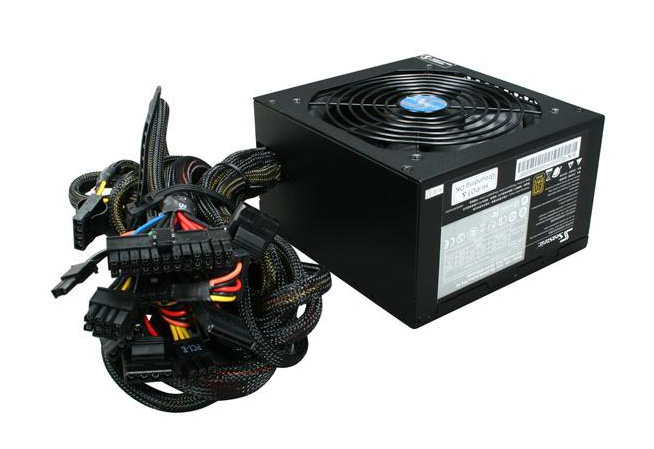
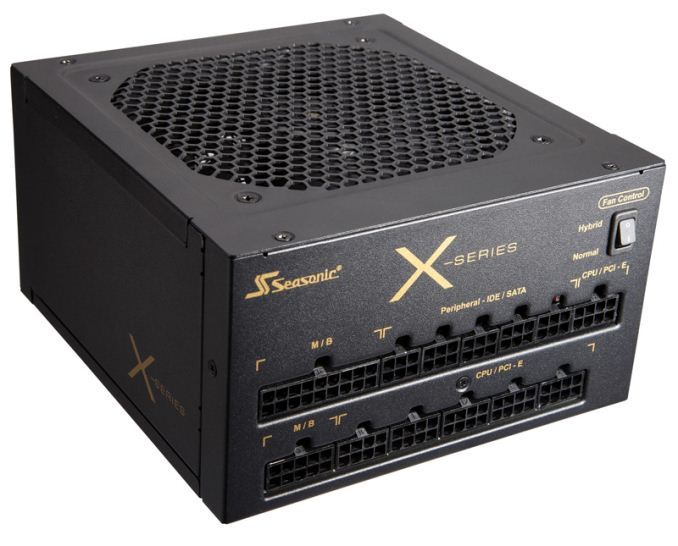
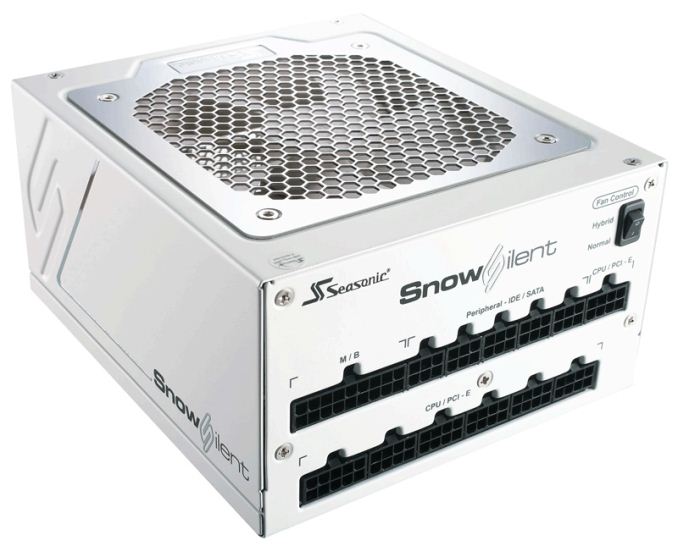
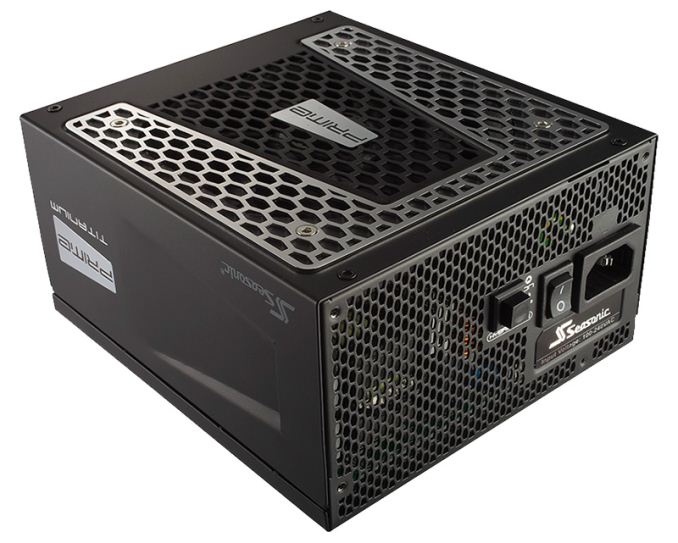
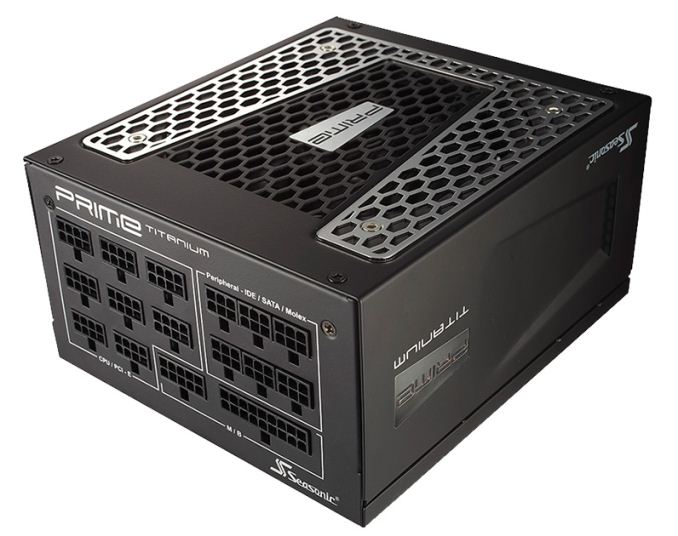



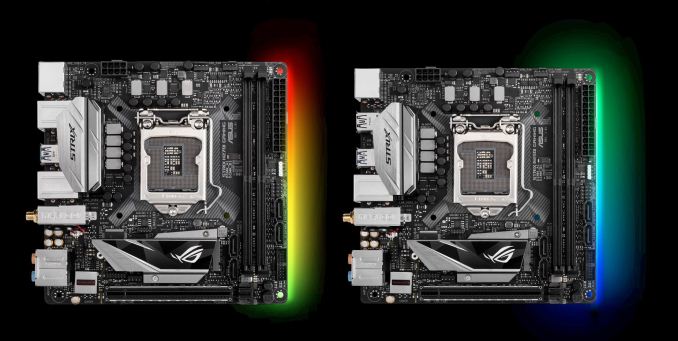
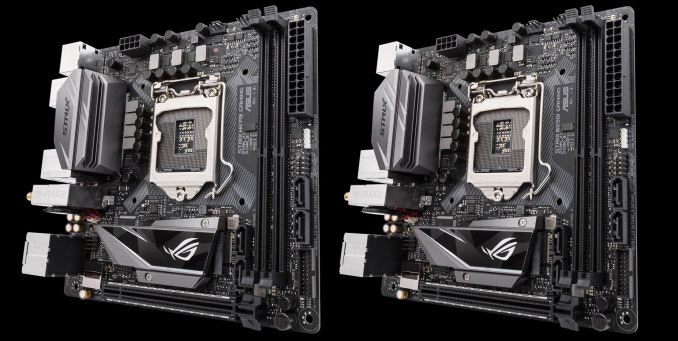
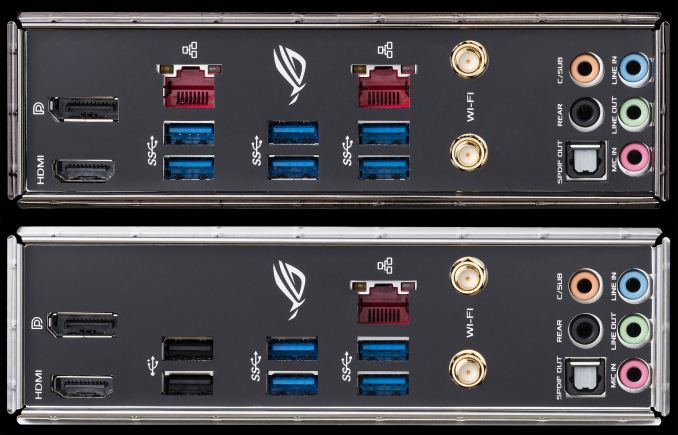
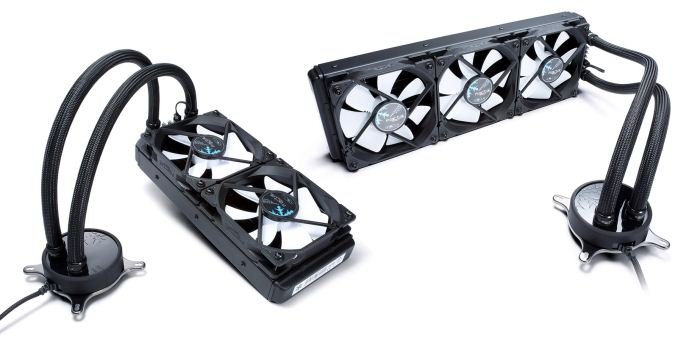


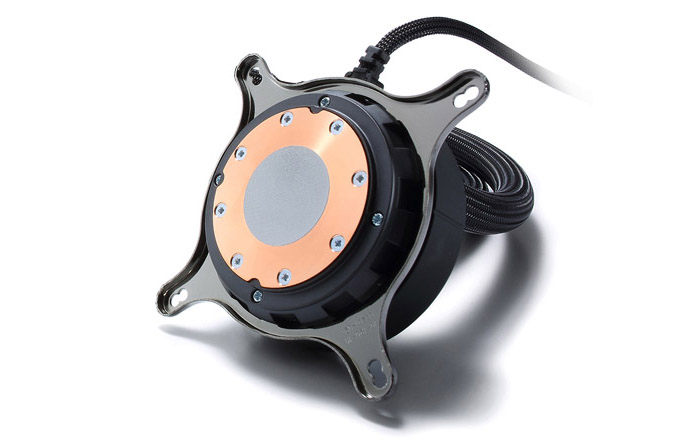
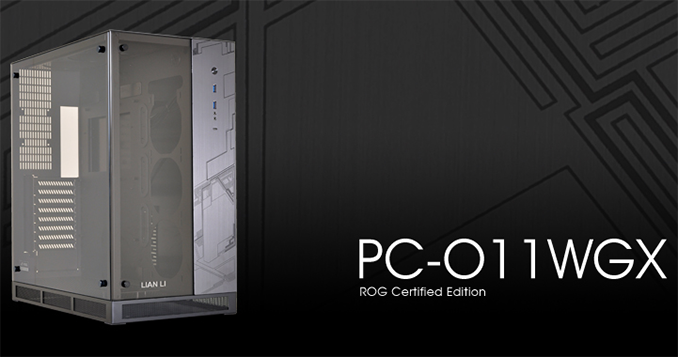

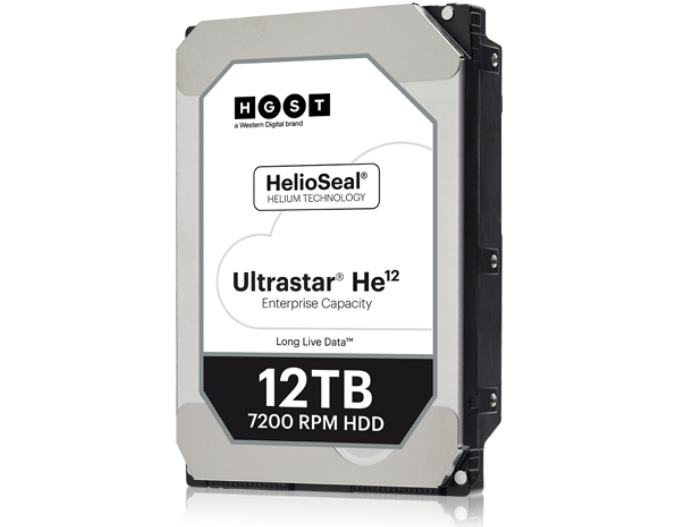


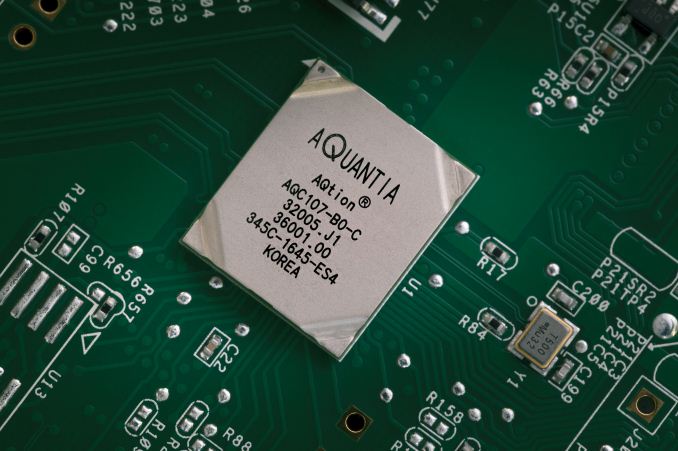
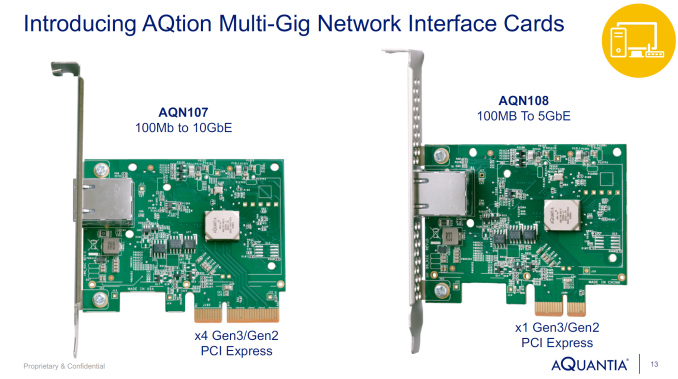
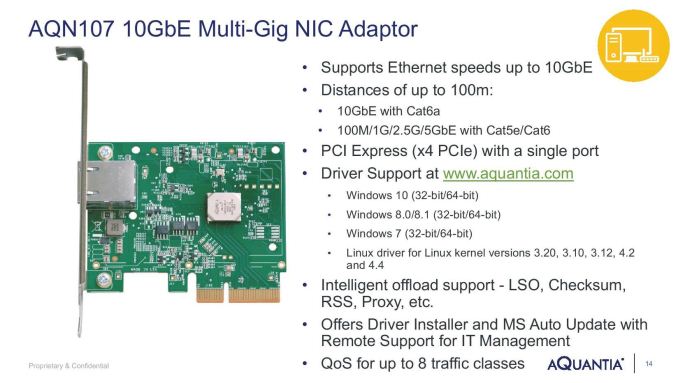
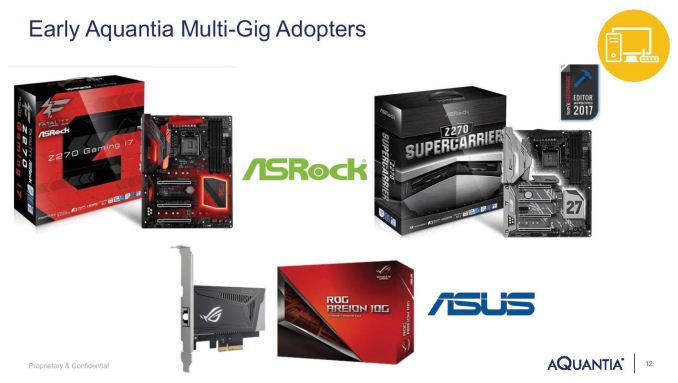
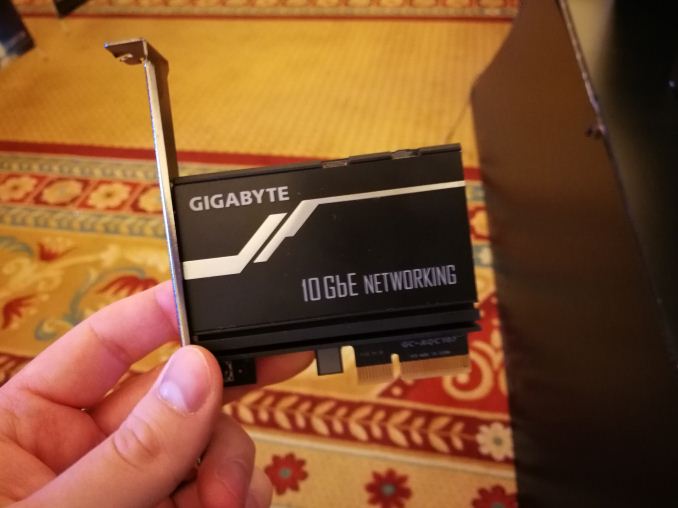

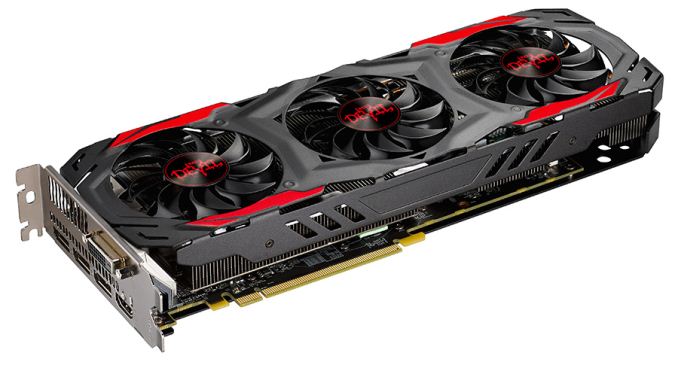
















Bookmarks